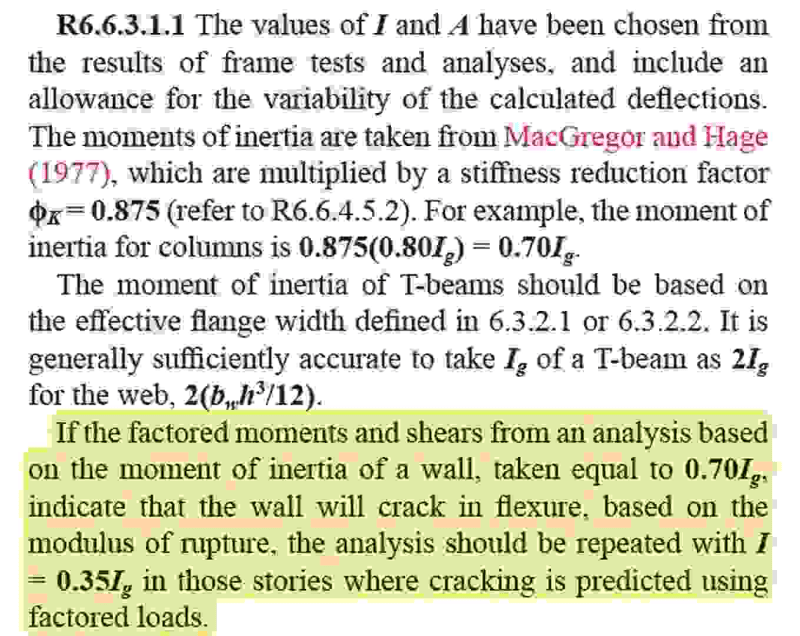Hi
As i see rarely someone check wither the shear wall is cracked or not then apply stiffness modification accordingly for the shear wall, as you know we should apply F22=0.35 for cracked wall and F22=0.7 for uncracked wall (default axes orientation)?
we check this by creating a model and assume that wall is uncracked and apply f22 = 0.7 then analysis the model, create and envelope load combination for (0.9DL+E loads or all lateral loads combination) then check S22 stress of wall if it is greater than the modulus of rupture of concrete (fr), if the stress is greater than fr we consider the shear wall a cracked and apply 0.35 , this is effect checking of Story drift,Stability index and calculating fundamental period of the building. What do you think about this.
ACI 318-19 R6.6.3.1.1 "If the factored moments and shears from an analysis based on the moment of inertia of a wall, taken equal to 0.70Ig, indicate that the wall will crack in flexure, based on the modulus of rupture, the analysis should be repeated with I = 0.35Ig in those stories where cracking is predicted using factored loads."
As i see rarely someone check wither the shear wall is cracked or not then apply stiffness modification accordingly for the shear wall, as you know we should apply F22=0.35 for cracked wall and F22=0.7 for uncracked wall (default axes orientation)?
we check this by creating a model and assume that wall is uncracked and apply f22 = 0.7 then analysis the model, create and envelope load combination for (0.9DL+E loads or all lateral loads combination) then check S22 stress of wall if it is greater than the modulus of rupture of concrete (fr), if the stress is greater than fr we consider the shear wall a cracked and apply 0.35 , this is effect checking of Story drift,Stability index and calculating fundamental period of the building. What do you think about this.
ACI 318-19 R6.6.3.1.1 "If the factored moments and shears from an analysis based on the moment of inertia of a wall, taken equal to 0.70Ig, indicate that the wall will crack in flexure, based on the modulus of rupture, the analysis should be repeated with I = 0.35Ig in those stories where cracking is predicted using factored loads."

